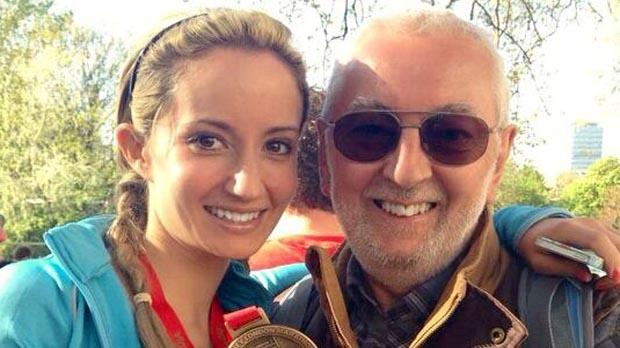
“I think it’s really important that people keep signing up to these type of trials to push research forward.”
Please note - this trial is no longer recruiting patients. We hope to add results when they are available.
This trial is looking at a treatment that uses heat from radio waves to destroy abnormal cells (radiofrequency ablation) lining the food pipe (oesophagus). It is open to people with Barrett’s oesophagus or abnormal changes to squamous cells in the food pipe (squamous dysplasia).
If you have Barrett’s oesophagus or squamous dysplasia, it is possible that these conditions could become either adenocarcinoma or squamous cell cancer of the food pipe. Doctors want to be able to treat these conditions before they turn into cancer.
There is a way of treating these cell changes called HALO radiofrequency ablation. The HALO tool attaches to a thin flexible tube with a light on the end (an endoscope). The doctor passes the endoscope into the food pipe. They then look down the endoscope and use HALO to kill off any abnormal cells they can see. The body then replaces dead abnormal cells with healthy cells.
Trials in the USA and Europe have suggested that this treatment is safe and works well for these conditions. NICE recommends this treatment for Barett's oesophagus. As well as treating people with Barrett’s oesophagus and squamous dysplasia, the aim of this trial is to build a long term record of treatment effects (a ‘registry’).
You can enter this trial if you
You cannot enter this trial if you
This trial will recruit more than 1,700 people.
Everyone taking part will have one or more HALO treatments, depending on their situation.
You have HALO as a day patient. If you take any medication to stop your stomach making acid, you should take this before the procedure. You then lie on your left side. You will have an injection through a drip into a vein in your arm or hand to make you feel sleepy (a sedative). The doctor will then pass a thin flexible tube with a camera and light on the end (an endoscope) through your mouth and into your food pipe to the area that needs treating. You then have HALO treatment every 2 to 3 cm along this area. The whole procedure will take between 30 to 45 minutes. You should not remember anything about this treatment as you will be sleepy all the way through.
You then have regular check ups and more HALO treatment if you need this.
If you need to have tissue samples (biopsies) taken, the team will ask your permission to collect some extra samples for the trial. They will take up to 4 extra samples of tissue, and 2 samples of cells collected with a small brush (‘brushings’). They will use these samples to understand why this treatment does not always work for everyone. Also, by linking gene features (‘markers’) from these samples to people’s treatment outcomes, they hope to be able to work out who HALO will help in future.
Before you start the trial you will see the doctor, and have a pregnancy test if appropriate. You may also have some more tests to confirm your diagnosis. These may include
You come to hospital for the day for your HALO treatment. You then have regular check ups and possible further HALO treatments, depending on your condition.
If you have Barrett’s oesophagus, you have
If you have squamous dysplasia, you have an endoscopy with biopsy about 3 months after your HALO treatment. If everything is normal, you then repeat this
If any of these tests show that you have more Barrett’s cells or squamous dysplasia, you will have more HALO treatment.
It is usual to continue to have check ups for these conditions. You will stay in the trial for as long as you need these, so you can have the treatment, and the team can collect long term information about it.
Side effects of HALO treatment include
The risks of any side effect from HALO would be the same as if you were having this treatment outside of the study. Your study doctor will also talk to you about possible risks of endoscopy, ablation and biopsy.
Please note: In order to join a trial you will need to discuss it with your doctor, unless otherwise specified.
Prof Laurence Lovat
Experimental Cancer Medicine Centre (ECMC)
University College London Hospitals NHS Foundation Trust
If you have questions about the trial please contact our cancer information nurses
Freephone 0808 800 4040

“I think it’s really important that people keep signing up to these type of trials to push research forward.”